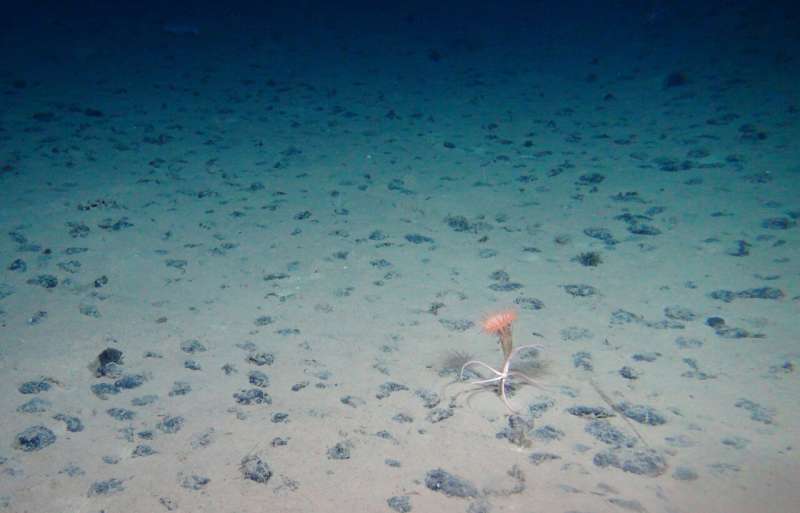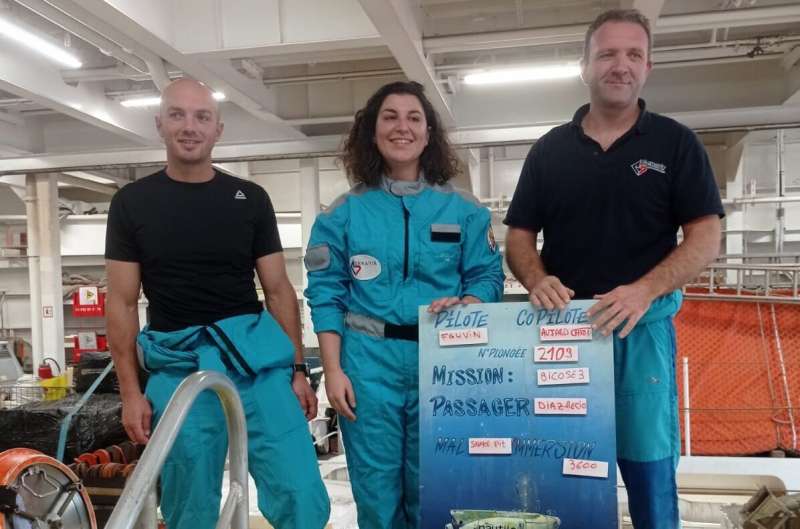This article has been reviewed according to Science X's editorial process and policies. Editors have highlighted the following attributes while ensuring the content's credibility:
fact-checked
trusted source
proofread
Marine biologist finds unexpected biodiversity on the ocean floor

Hydrothermal vents and manganese nodule fields in the deep oceans contain more biodiversity than expected, according to the thesis that NIOZ-marine biologist Coral Diaz-Recio Lorenzo will defend at Utrecht University on January 26.
"This research—again—shows that we should be extremely careful before allowing commercial deep-sea mining for minerals that are found in these habitats," marine ecologist Sabine Gollner of NIOZ says.
For her Ph.D.-research, Diaz-Recio Lorenzo looked at the copepods that she collected at hydrothermal vents in the Lau Basin, on the border of the Australian and the Pacific plate, near the island of Tonga. Using large underwater robots, she collected a number of these tiny, shrimp-like animals, that dominate these habitats. The samples were collected from different locations within one basin.
Through DNA analysis she then showed that different populations lived rather isolated from each other, with little interaction between the populations. From basins further away, she collected specimens that looked the same, but should still be considered different species, based on the composition of their DNA.

Living on nodules
The second part of her research concerned samples of manganese nodules, that were collected from the Clarion Clipperton Zone, a large region at depths of 4,000 to 5,000 meters in the Pacific Ocean. She found that in these nodules, typically 10 to 15 individuals—but sometimes even more than 200 individuals—of nematodes, copepods and other animals can be found.
Many of these animals appeared specific to the nodules because they were not found in the samples of the sediments that were collected around these nodules. Some animals may even use the nodules as habitat for reproduction, as Diaz-Recio Lorenzo found eggs inside the nodules.
NIOZ Marine ecologist Sabine Gollner, the co-promotor of the Ph.D.-research by Diaz-Recio Lorenzo, is surprised by the uniqueness and the diversity of life that is found around the hydrothermal vents and in the manganese nodules.
"The locations that were studied are areas that are currently explored for minerals. But this research shows that we should be extremely careful with regards to potential future deep-sea mining, as these unique species carry high extinction risk."
Provided by Royal Netherlands Institute for Sea Research



















